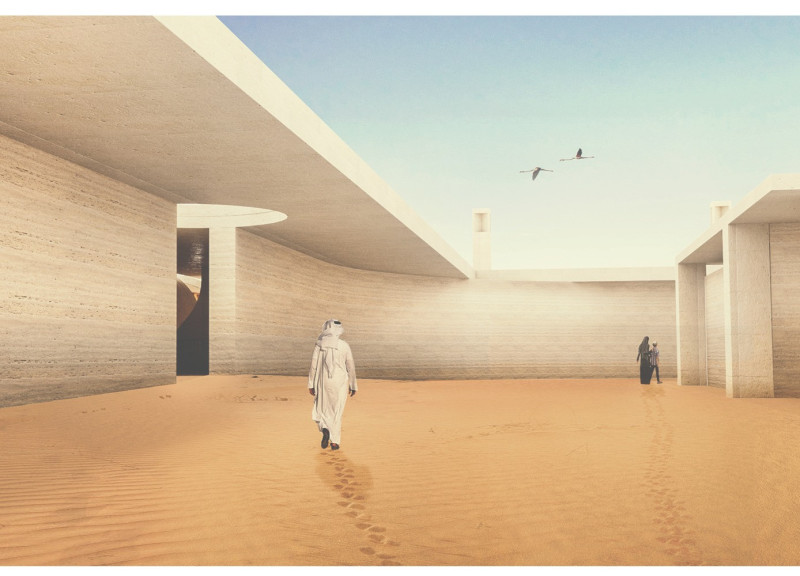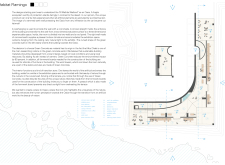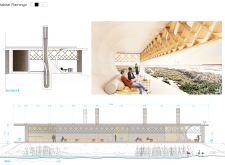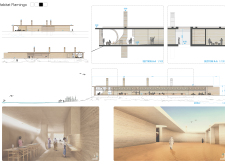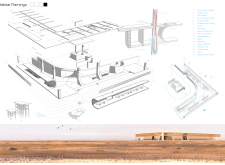5 key facts about this project
Sustainability and Environmental Integration
One of the key aspects of Habitat Flamingo is its commitment to sustainability. The project utilizes Green Concrete, a material that significantly reduces the carbon footprint by incorporating industrial byproducts. This approach not only addresses environmental concerns but also enhances the building's thermal performance, allowing it to adapt to the extreme local climate. The design includes elements such as large overhanging roofs that provide shade and minimize heat gain. This feature supports passive cooling strategies that reduce reliance on mechanical systems.
The architecture emphasizes a fluid connection between built and natural environments. Curved walls lead visitors into different spaces, creating a seamless transition that encourages exploration. Natural light is maximized through strategically placed windows and a central skylight, enhancing the indoor atmosphere and reducing the need for artificial lighting. This thoughtful integration of light, air, and space further supports the project’s educational goals, allowing occupants to experience the surrounding wetland environment.
Architectural and Functional Features
The layout of Habitat Flamingo consists of various functional areas designed for educational purposes. Exhibition spaces are designed to inform visitors about local wildlife and ecological processes. Interactive installations and display areas enhance visitor engagement, facilitating discussions about environmental issues. Additionally, transition zones, such as terraces and seating areas, are incorporated to allow visitors to pause and engage with the environment.
Materials play a crucial role in the project. The use of natural stone not only aligns with local geological characteristics but also enhances the tactile experience of the space. Wood elements, utilized in framing and furnishings, contribute warmth and human scale to the architecture. The design also creatively reuses formwork boards as furniture, demonstrating resourcefulness and promoting the principles of sustainability throughout the project.
Ultimately, Habitat Flamingo serves as a model for responsible architectural practices. By prioritizing sustainable materials, energy efficiency, and engagement with the surrounding environment, the project delivers valuable lessons on biodiversity and conservation. For further insights into the architectural plans, sections, designs, and ideas, readers are encouraged to explore the full project presentation. This endeavor reflects a significant step in integrating architecture with environmental education and awareness.


